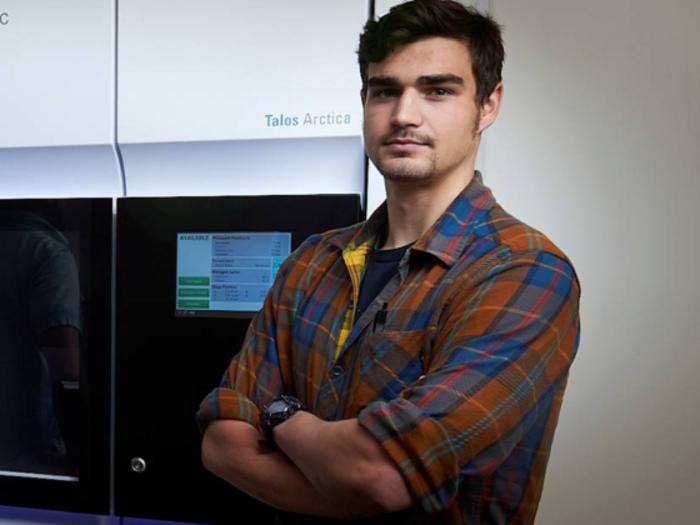BOZEMAN – Scientists at Montana State University have been studying unique immune systems for decades, and a research team in the Department of Microbiology and Cell Biology took another step forward with work described in a paper published in the highly regarded journal Nature.

Credit: MSU photo by Kelly Gorham.
BOZEMAN – Scientists at Montana State University have been studying unique immune systems for decades, and a research team in the Department of Microbiology and Cell Biology took another step forward with work described in a paper published in the highly regarded journal Nature.
The Aug. 7 paper, titled “A virally-encoded tRNA neutralizes the PARIS antiviral defense system,” was fast-tracked for publication by the journal due to the importance of the findings. MSU doctoral student Nate Burman is the lead author, along with professor Blake Wiedenheft, six other MSU scientists and collaborators from France, Russia and Sweden.
The research explores the PARIS immune system, which bacteria use to protect themselves against viral infections. Work with PARIS, which stands for Phage Anti-Restriction Induced System, builds on Wiedenheft’s ongoing research into CRISPR, or Clustered Regularly Interspaced Short Palindromic Repeats, a field in which Wiedenheft is an internationally leading scientist.
“In nature, CRISPRs are part of a family of adaptive immune systems in bacteria, but scientists have repurposed these immune systems as programmable molecular scalpels that are now being used to repair damaged DNA for lifesaving therapies,” said Burman, who is beginning the third year of his doctoral studies. “But CRISPRs aren’t the only bacterial immune systems that exist. What’s unique about PARIS is that it recognizes viral proteins instead of nucleic acid. That’s similar to how a human immune response works. PARIS is totally different from a human immune system, but the conceptual analogy is intriguing.”
One of the crucial new findings in the paper is the first complete image of what the PARIS system looks like. To generate that image, Burman used a unique, ultra-high-powered microscope housed at MSU. It is equipment that few campuses nationwide have access to, housed in MSU’s Cryo-EM Core Facility, and MSU was only the second university in the region to acquire one back in 2021.
“Using a new state-of-the-art cryo-electron microscope at MSU, Nate was able to ‘see’ the PARIS complex that forms inside of a bacterial cell,” said Wiedenheft. “It’s wild to think that we can now peer into cells and see the machines that do the work necessary to maintain life or defend it from infection.”
The structure of PARIS reveals a propeller-shaped complex that consumes ATP, or energy, in search of invading viral proteins. Foreign protein detection triggers the release of a toxin that shuts down viral replication, protecting healthy cells.
There are numerous PARIS immune systems that operate in different ways, Burman said, and the next steps in this research will include identifying the triggers that activate those systems. Knowing how PARIS recognizes a viral attack and initiates a response could advance understanding of how different types of immunity provide protection, including in organisms beyond bacteria.
As researchers in Wiedenheft’s lab continue to operate on the forefront of structural biology, Burman said the institutional support for their scientific work has fostered a collaborative domain for scientists, regardless of where they are in their career. Burman’s own research experience in Bozeman began when he was an undergraduate student at Carroll College in Helena and participated in a research experience for undergraduates, or REU, at MSU. Now, he relishes the opportunity to be a mentor to the young scientists coming after him.
“Blake’s support is huge, and he really pushes us think big about small proteins, how they work in nature and how we might use them in new ways,” Burman said.
Journal
Nature
Method of Research
Observational study
Subject of Research
Cells
Article Title
A virally-encoded tRNA neutralizes the PARIS antiviral defence system
Article Publication Date
7-Aug-2024



